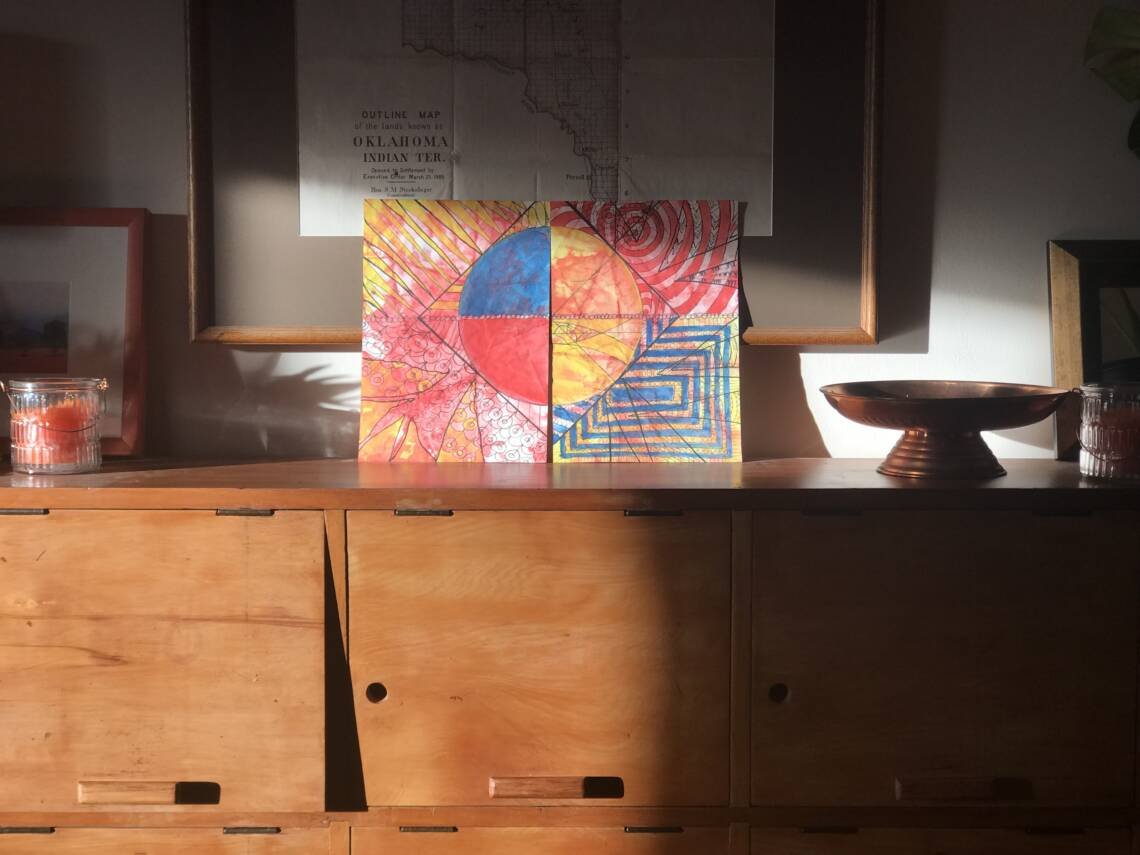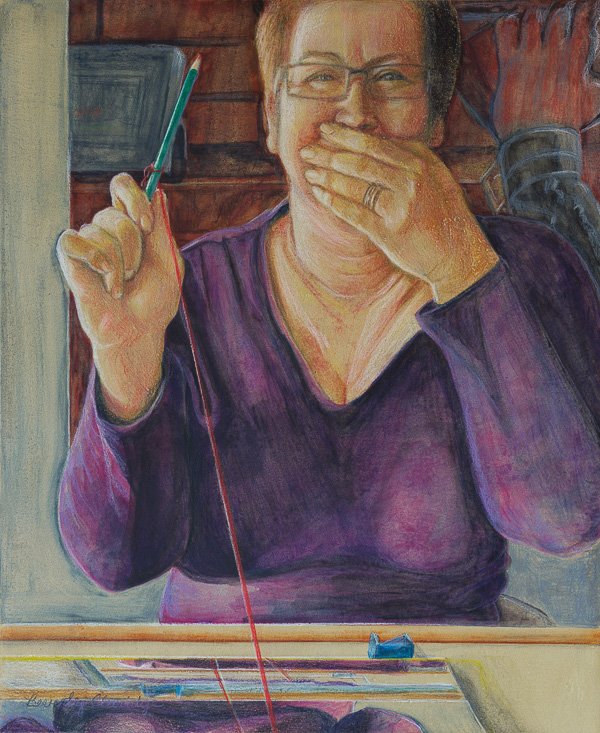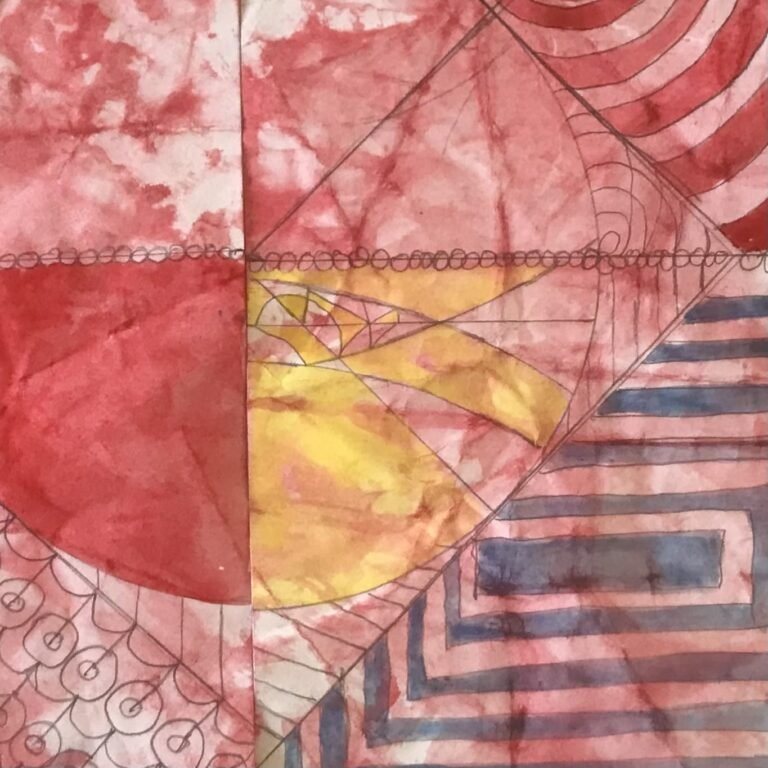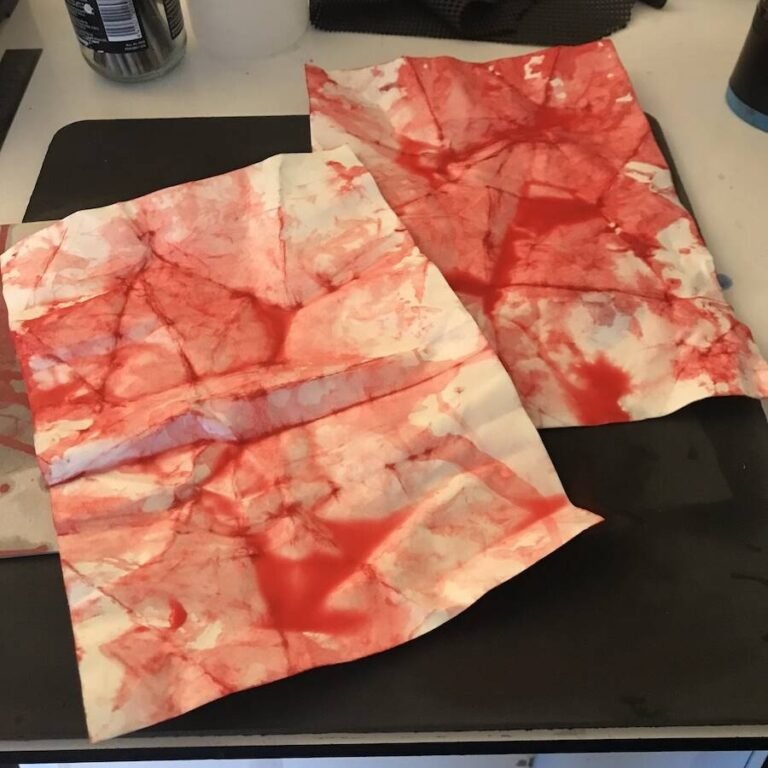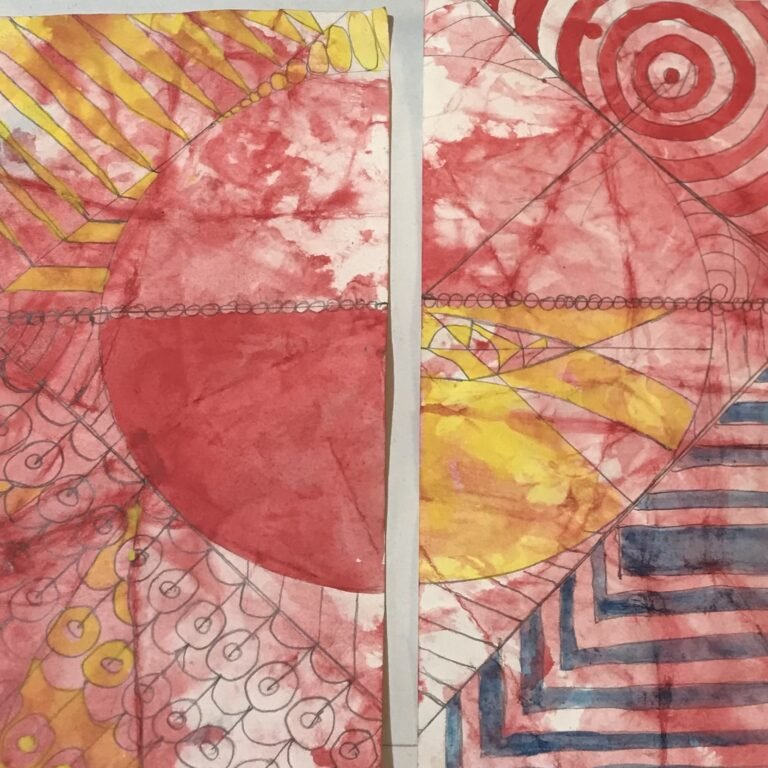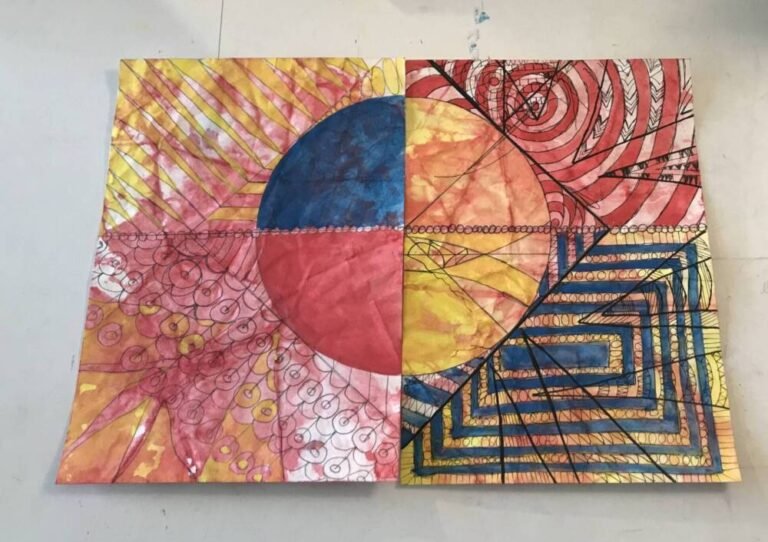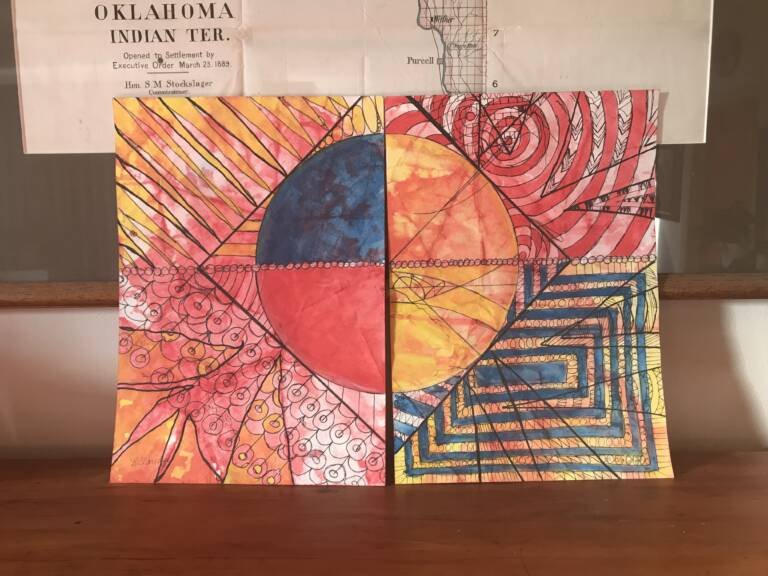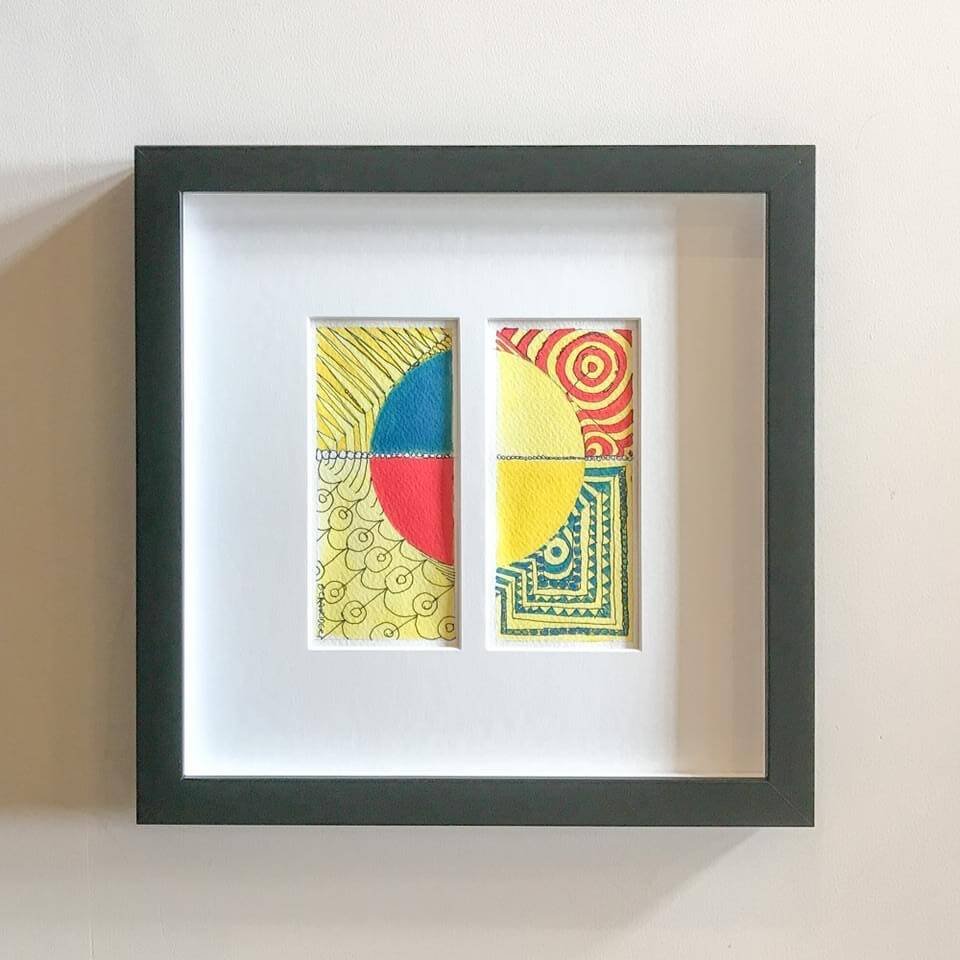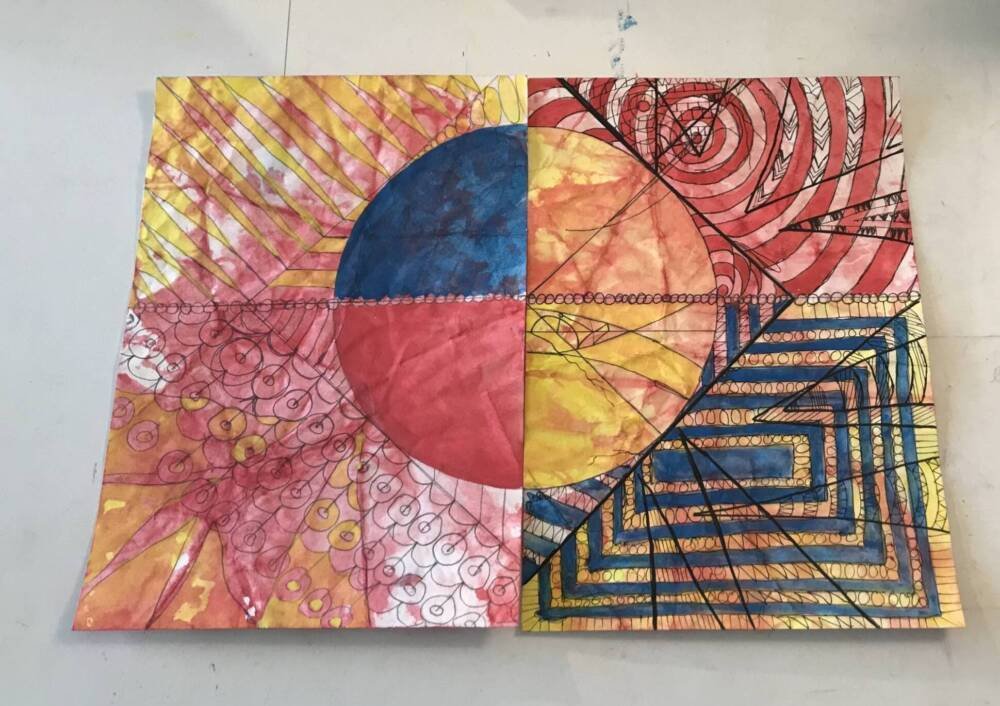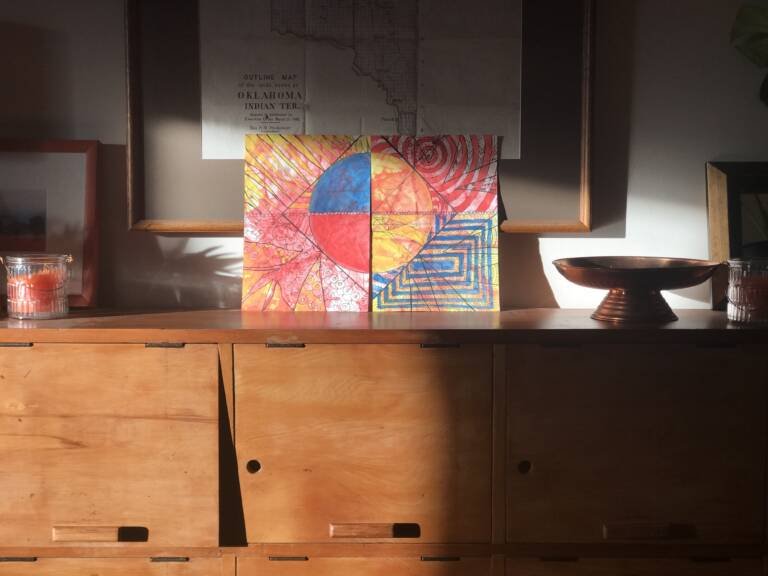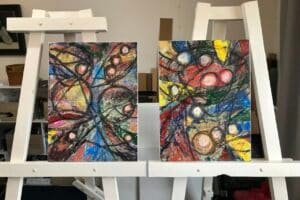Why analyse your art work?
You can analyse your art work to better understand the success of a finished work and learn to talk about your work using the language of art.
‘Red Playground – Finish what you started’ is now finished and ready for me to frame later this year to sell.
Before I can truly move on from the work I want to analyse it. A month or so has lapsed, in real time (rather than YouTube time). My eyes and brain have had a good rest from everyday concentration on the piece.
what is your motivation?
Why do you want to analyse your art work?
Mine was pretty simple. I wanted to relax in the studio and have playful fun after an intense four year period. Exploring abstraction was a nice break from the stress of research and writing for narrative realism work. I wanted little pressure in the studio. Other than just simply working at it nearly every day, I had few demands.
However, even the best play was better with a few rules. Keeping it simple and stress-free was important. My rules:
- Use the supplies I had on hand until I totally ran out. I had a lot left over from the former business.
- All new work is a derivative of previous work. Click here to read my tribute to Allie Eagle to find out why I chose to do this.
- I had to embraced the idea that there are no mistakes; only opportunities to discover something new.
- Creating 52 works by May 2024 was a good deadline that kept me moving.
(Continued below)
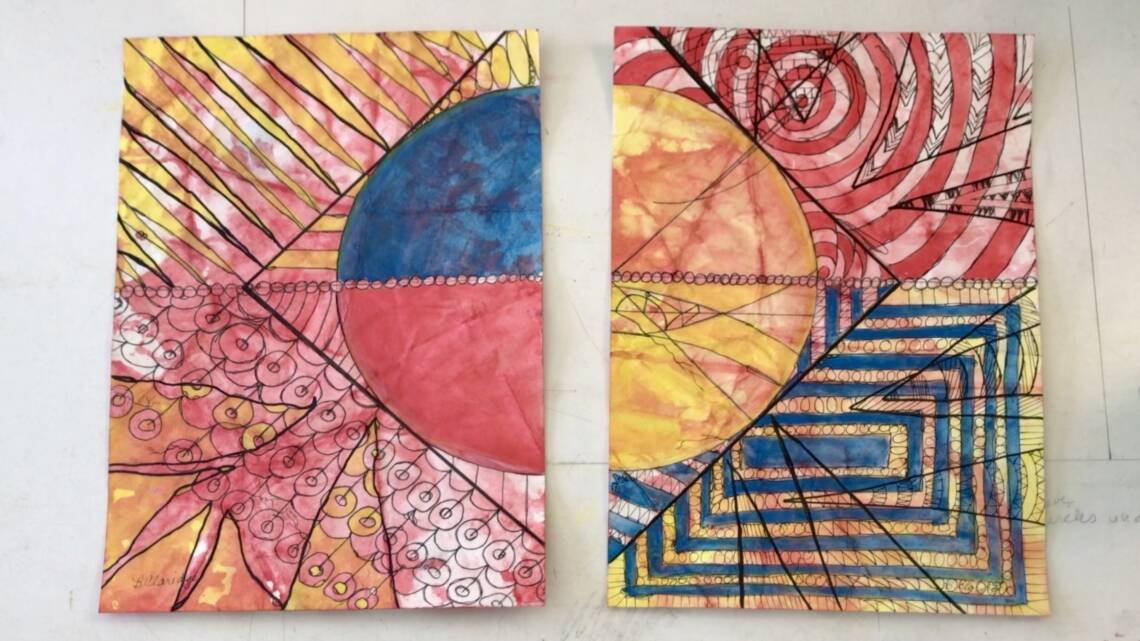
Time for Analyisis
Guidelines set for the 'red Playground series'
Explore inktense properties
Inktense was a medium with which I became familiar when I created several ‘Out of Hand’ works. I wanted to explore its properties and learn more ways to work with it, including finding the best method to get permanence in a layer before applying the next.
limited colour choice
Finding new pre-treatment of the support (paper), observing the effects of applying media.
Pretreat the paper support
Using primary colour helps me avoid the concern of pre-mixing colours.
the language of talking about art
Analyse your art work is better if you talk about your art in terms of elements and principles of art, in otherwords, the language of art. I’ll demonstrate a use of them in my analysis of ‘Red Playground – Finish what you started’.
the elements of art
Colour, line, shape, form, texture, value and space are to used to create a work and express the principles of art.
the principles of art
Balance, contrast, movement, pattern, rhythm, unity, emphasis and proportion are the principles providing a framework in which to talk about art.
An artist chooses to employ elements in various ways to affect the principles.
My analysis of 'red playground - finish what you started'
Art analysis using the Elements of art
Line
Pigment ink pens finalised linear elements created with the Inktense and enhance design.
Shape
Circles, triangles, lines and squares in this work created pleasing designs as well as balance and direction.
Form
Form was created by changing intensity of the application of Inktense. Coloured pencil enhanced the circles form.
Space
Initially a lot of space existed around the circles until I added strong Inktense colour, and followed up with designs in pigment ink. In the early stages, I left the arcs of the circle empty and celebrated the process by playing with the earlier misguided graphite marks.
Texture
Pretreatment of the support involved soaking, staining, drying, soaking again and drying again, followed by steam ironing. The lively red pattern across the crunchy paper gave it a tactile, coloured texture. None of the media added texture.
Colour
I loved the results from layered primary colours over each other, in particular, over the pre-treatment red.
Value
The strength or intensity of the alternating stripes on the right side earlier demonstrated the effect contrasting value can have on a work. I counterbalanced the difference in value (and contrast) by adding Inktense design in the lighter valued yellow.
Art analysis using the principles of art
Balance (symmetric, asymmetric, and radial symmetry)
The circle inside the square provides a sense of symmetric balance. A nod to asymmetric balance is given in both bottom portions and the right upper large pointers. Counter-balance is offered in the upper left with the row of pointers aimed at the blue semi-circle. I found myself fighting the strong radial symmetry of the right side, which gave rise to the large strong pointers.
Balance (symmetric, asymmetric, and radial symmetry)
The circle inside the square provides a sense of symmetric balance. A nod to asymmetric balance is given in both bottom portions and the right upper large pointers. Counter-balance is offered in the upper left with the row of pointers aimed at the blue semi-circle. I found myself fighting the strong radial symmetry of the right side, which gave rise to the large strong pointers.
Contrast (including juxtapositions)
I like the vestiges of the original graphite marks on the right half circle. The pigment ink tracings give direction over to the other side of the diptych. The pretreatment of the paper shines through particularly on the blue and red segments on the right side.
I ask my husband for his thoughts on the completed work. That’s a risky endeavour, you may think, but I consider it one of many benefits of balanced, long-time marriage; truthful discussions with no fear of repercussion. I also value his opinion as a non-artist.
He suggests the left side has more contrast than the right side; further offering that he isn’t sure the red and blue belong there at all. Interesting.
The artist in me views it as a counterbalance to the frenetic design of the right side, and considers it a nod to the original piece from which this one is derived. What do you think?
Movement
Strong alternating circles and rectangles on the right side draw the eye into their respective centres. I’ve taken care to draw the eye downward and toward the centre and over to the left, in a clockwise movement, enhanced by the curved stripes in the right top and bottom.
Pattern (repeat of an element)
Stripes and more stripes, circular and rectangular, are in the right half, and in designs within the square surround the circle in all quadrants.
Rhythm
The repetition of the pointers, except in the upper left gives rhythm. I thought the number of smaller pointers would balance the larger pointers in the remaining quadrants. I think of the erratic rhythm of fireworks and firecrackers.
Unity/Variety
The circle and the encompassing square, along with the strong pointers give a kind of unity to what could, otherwise, be a frenetic work.
Emphasis
My husband says the first thing he sees is the red and blue semi-circles on the left side. I’m surprised because of my concern about the strength (of contrasting) stripes and rectangles on the right. Perhaps, this means I achieved what I set out to do, which was to decrease the contrast.
Proportion
I’m pleased with the balance of the proportion of the circle quadrants with the design outside the circle. I achieved a kind of proportional balance with the pointers.
what I've learned from creating 'red playground - finish what you started'
Did I honour my motivation and rules?
Simply, yes. In spite of the interruptions that come with a full-on life, alongside the hectic video-creation process, I’ve manage to laugh a lot. In fact, I’ve had to edit a lot of it out, whilst having a blast in the studio. Mostly.
By using geometric shapes I can now integrate new things learnt into more complex future work.
I’ve acknowledged each of the rules so far. The number of works needed within a tight timeframe frees me from the re-working marks. No time for that.
The biggest win is creating on the fly and moving quickly past an imperfect mark by making more. I think the collection of ragged imperfect marks attains new beauty en masse.
What about those guidelines?
One guideline for Red Playground series is fulfilled in that I’m exploring the properties of Inktense. Importantly, I’ve learned how to make a layer colourfast before adding the next. The success of mastering this colourfastness is evident in the resulting work. Layering thin primary colours over the pre-treated support evokes a magical flame-like effect.
Because I’m in a year of exploration I choose to not entertain what I could do to improve. I don’t want to be hypercritical right now. I’d rather play. Perhaps analysis will come later. No pressure right now.
the relationship to the original
‘Red Playground – Finish What you started’ was inspired by can ‘Can Red Come Out to Play VII’. How do the two relate to one another?
The second work seems to thunder and clap; I’m thinking,Tchaikovsky’s 1812 Overture. Nearby stands its quiet, almost lyrical forebear; likened to a beautifully sung rendition of ‘The Banks of Loch Lomond” with pipes and drum.
Both are similar in the theme, victory and loss, but each displays its own timbre and atmosphere.
They are related. But distinct. I like that.
the last word
Gazing at ‘Red Playground – Finish what you started’, set on top of vintage rimu New Zealand high school lockers that I refinished last spring, satisfaction washes over me. The artwork, put aside for a season, is now complete. It lives on to inspire future work.
Leaning against an original 1889 lithograph of the Outline Map of the lands known as Oklahoma Indian Territory, a keepsake from my parent’s collection of earthly goods, the newest work sits comfortably midst the bygone. The fading winter sun gently illuminates the tableau. Gum wood snaps and pops in the Yunca as I sip my hot cup of tea.
I savour the satisfaction and amazement of how simple plodding, planning, and focus continues to shape my life.

